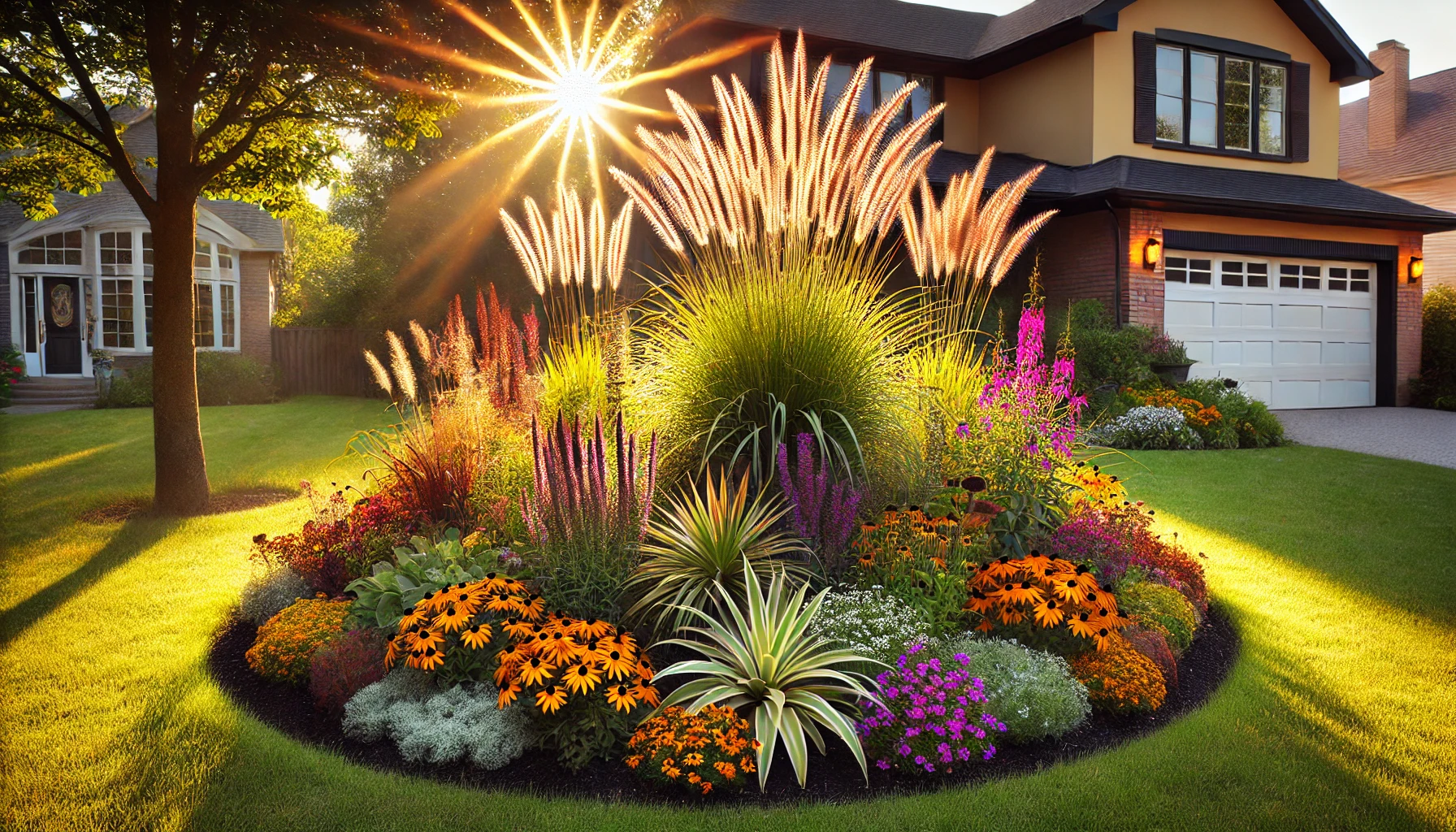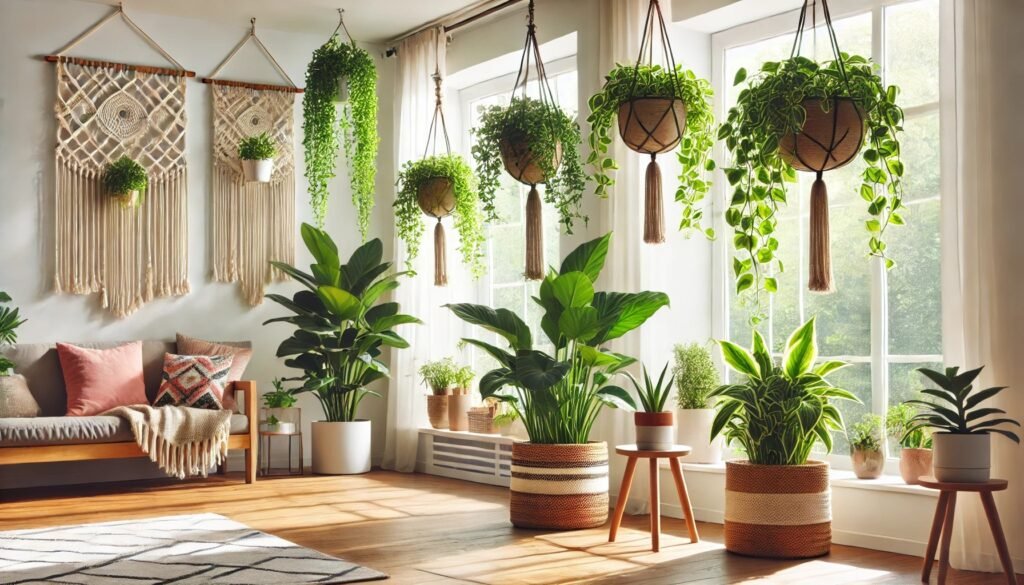
Designing a garden that bursts with color throughout the seasons is every gardener’s dream. By carefully selecting plants based on bloom times and layering them according to their height and spread, you can create a garden that offers continuous interest. In this article, we’ll focus on two different garden beds: one positioned against a wall or fence, and the other designed as a stand-alone centerpiece in the yard. We’ll combine perennials and annuals to give you the perfect mix of long-lasting beauty and seasonal pops of color.
Planning for Bloom Times
Before diving into plant selection, it’s essential to understand the role of bloom times. By staggering plants with varying bloom periods, your garden will always have something in flower, keeping it vibrant and colorful from spring through fall. Many perennials bloom for only a few weeks, but when paired with annuals and other perennials with different bloom times, you can maintain an eye-catching display.
Garden Bed Against a Wall or Fence

A garden bed against a house wall or fence typically has more structure, allowing you to create a tiered effect with tall plants in the back, medium plants in the middle, and shorter ones in front. The height of the wall or fence offers protection and helps taller plants stand out without blocking the view.
Layering for Height and Structure
For this garden bed, choose plants with heights that vary but work well together. Here’s a layout to create layers:
- Back layer (tall perennials and shrubs): The back row will consist of taller plants that can grow up to 3 or 4 feet (about 1 meter). Choose perennials like Joe-Pye Weed (Eutrochium purpureum), Delphinium, and Hollyhock (Alcea rosea). These plants are great for adding height and structure to the back of the bed. Hollyhocks are biennials, but they reseed and return each year. The mix of soft pinks and purples from the Joe-Pye Weed and Delphinium will create a striking backdrop.
- Middle layer (medium-height perennials and annuals): For the middle section, add plants that reach about 2 to 3 feet (60 to 90 cm). Consider Shasta Daisies (Leucanthemum x superbum), Coreopsis, and Snapdragons (Antirrhinum majus). These plants will provide a bright splash of yellow, white, and red. Snapdragons, as annuals, offer continuous blooms, and Shasta Daisies bloom from summer to early fall.
- Front layer (low-growing perennials and annuals): For the front, choose plants under 1 foot (30 cm) tall, like Creeping Thyme (Thymus serpyllum), Lamb’s Ear (Stachys byzantina), and Marigolds (Tagetes). These will provide ground cover, add texture, and fill in gaps. The silver leaves of Lamb’s Ear contrast beautifully with the vibrant marigolds.
Soil and Watering Requirements
This garden bed will require well-drained soil. Mixing compost into the soil will improve its texture and drainage. Most of these plants prefer moderate watering. Water deeply once a week, ensuring the soil doesn’t dry out completely between watering sessions. Delphiniums and Joe-Pye Weed thrive in slightly moist soil, so if you live in a dry region, ensure they receive a bit more water.
Stand-Alone Garden Bed in a Yard

A stand-alone garden bed, such as one placed in the center of a front yard, offers 360-degree views, which means layering needs to be circular. Taller plants should be placed in the middle, with medium-height plants around them, and shorter plants forming a border.
Layering for a Central Design
Here’s a plan for layering this type of garden bed:
- Center layer (tall perennials and ornamental grasses): In the center, choose plants that stand tall without overwhelming the space. Russian Sage (Perovskia atriplicifolia) is a fantastic choice due to its height and lavender-blue blooms. Combine it with Ornamental Grasses like Miscanthus or Feather Reed Grass (Calamagrostis acutiflora), which provide texture and movement. These plants can reach up to 4 feet (1.2 meters) and create a dynamic focal point.
- Middle layer (medium-height perennials and annuals): Around the taller plants, select medium-height perennials like Echinacea (Coneflower), Black-eyed Susans (Rudbeckia hirta), and annuals like Cosmos for a burst of pink and yellow. These plants add a lot of interest and bloom well into late summer. They grow to about 2 to 3 feet (60 to 90 cm), offering vibrant blooms that last for weeks.
- Outer layer (low-growing perennials and annuals): For the border, choose low-growing plants like Sedum, Alyssum, and Violas. These plants not only provide ground cover but also bring color right down to the edge. Alyssum, with its sweet scent and delicate white flowers, will soften the edge of the garden bed, while Sedum offers structural foliage that transitions beautifully into fall.
Soil and Watering Requirements
This stand-alone bed will thrive in well-drained soil rich in organic matter. Add compost to improve the soil’s ability to retain moisture without becoming waterlogged. Watering should be done based on the needs of the plants. Ornamental grasses and Sedum are drought-tolerant, but Echinacea and Cosmos will need more regular watering during hot, dry periods.
Grouping Plants with Similar Needs
An essential part of successful garden design is grouping plants with similar water and light requirements together. This reduces the risk of overwatering drought-tolerant plants or underwatering moisture-loving varieties.
Sun-Loving Plants
Both garden beds will benefit from a variety of sun-loving plants. Russian Sage, Black-eyed Susans, Echinacea, and Shasta Daisies all thrive in full sun. Ensure these plants receive at least 6 hours of direct sunlight daily to keep them healthy and blooming.
Moisture-Loving Plants
On the other hand, Joe-Pye Weed, Delphinium, and Snapdragons prefer slightly more moisture. Group them in areas that receive regular watering. Adding mulch around these plants will help retain soil moisture, reduce the need for frequent watering, and suppress weeds.
Best Plants for Continuous Blooms
To keep your garden full of life all season long, consider plants with different bloom times:
- Early bloomers: Snapdragons and Creeping Thyme bloom in early spring, giving your garden an instant splash of color as the weather warms up.
- Mid-season bloomers: Echinacea, Coreopsis, and Cosmos will bloom from mid-summer into early fall, offering weeks of bright color.
- Late-season bloomers: As summer fades, plants like Black-eyed Susans, Russian Sage, and Sedum will take center stage, ensuring your garden remains lively through the fall.
This mix of bloom times ensures that both garden beds remain attractive throughout the growing season, with something new to admire each month.
Final Thoughts
Designing a garden with layering and bloom times in mind may seem complicated, but it’s an enjoyable and rewarding process. By selecting a mix of perennials and annuals, planning for plant heights, and grouping based on similar water and soil needs, you can create stunning, low-maintenance garden beds. Whether you’re planting against a wall or fence or creating a stand-alone garden, these principles will help you build a garden that brings joy all year long. So grab your gloves, get planting, and watch your garden bloom in all its glory!
Stay connected with the world of plants! Subscribe to Phylofy for expert gardening tips, DIY projects, and eco-friendly inspiration. Join our community and nurture your love for nature. Don’t miss exclusive content and updates. Subscribe now!



